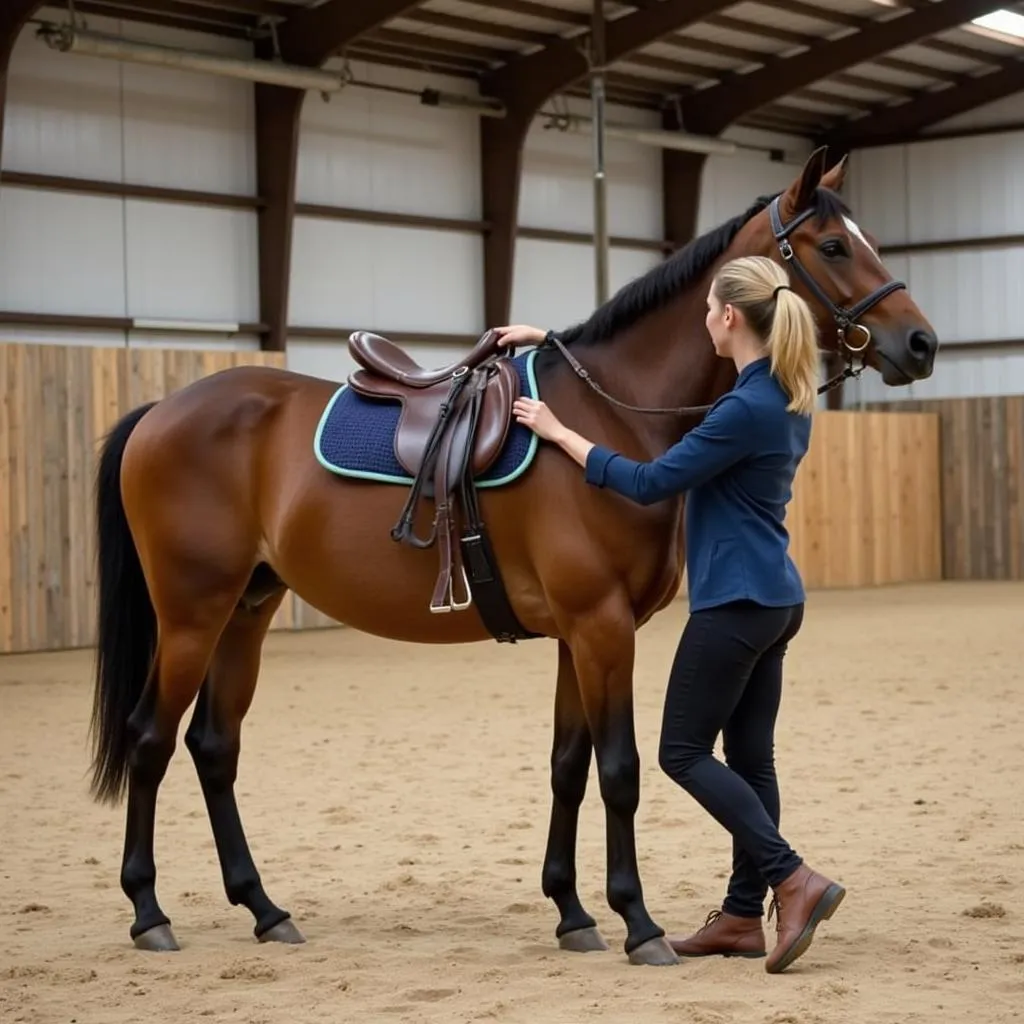The term “Bottle Horse” might conjure up images of mythical creatures or horses with unusual abilities. However, the reality is far more grounded. While often misunderstood, the term typically refers to a horse’s conformation, specifically a flaw in their build, rather than a distinct breed or magical characteristic.
 Horse Neck Conformation: Bottle Neck
Horse Neck Conformation: Bottle Neck
What Exactly is a “Bottle Horse”?
In equestrian circles, a “bottle horse” describes a horse with a neck that’s too narrow at the throatlatch, the area where the neck meets the head. This narrowness often widens abruptly as it extends towards the chest, creating a shape that resembles a bottle. This conformation flaw can impact a horse’s performance and way of going.
The Impact of a “Bottle Neck”
A horse’s neck plays a crucial role in balance, movement, and breathing. A “bottle neck” can hinder these functions in several ways:
- Restricted Airflow: The narrow throatlatch can compress the horse’s trachea (windpipe), making it difficult to breathe deeply, especially during exertion. This can lead to fatigue, poor performance, and even respiratory issues.
- Balance Issues: The uneven weight distribution caused by a “bottle neck” can make it challenging for the horse to find its balance, especially at faster gaits or when changing direction.
- Stiffness and Difficulty Flexing: The conformation flaw can limit the horse’s ability to flex at the poll (where the head joins the neck), making it difficult to achieve proper head carriage and bend correctly.
Is a “Bottle Horse” a Deal Breaker?
While a “bottle neck” is considered a conformation flaw, it’s essential to remember that no horse is perfect. The severity of the flaw can vary, and some horses with this characteristic can still perform well in certain disciplines.
Training and Managing a “Bottle Horse”
If you’re considering a horse with a “bottle neck,” it’s crucial to work with a qualified equine veterinarian and trainer. They can help assess the horse’s overall conformation, movement, and any potential limitations. Specific training techniques and exercises can encourage proper muscle development and flexibility, potentially mitigating some of the challenges associated with this conformation flaw.
 Improving Flexibility in Horses
Improving Flexibility in Horses
Looking Beyond the “Bottle”
Ultimately, judging a horse solely on the shape of its neck would be a disservice. When evaluating a horse, it’s vital to consider its overall conformation, temperament, health, and suitability for your intended riding discipline. A horse with a “bottle neck” may still possess other desirable qualities and can bring joy and companionship to the right owner with proper care, training, and management.
Frequently Asked Questions About “Bottle Horses”
- Can a “bottle neck” be corrected? While you can’t change a horse’s bone structure, targeted training can help develop muscles that improve flexibility and mitigate some of the negative effects.
- Are certain breeds more prone to “bottle necks”? There’s no specific breed predisposition, but it can be more common in horses with heavier builds.
- Is a “bottle horse” more prone to health problems? They might be more susceptible to respiratory issues due to restricted airflow. Regular veterinary checkups are crucial.
- Can a “bottle horse” be ridden? Yes, many horses with this conformation can be ridden, especially with proper training and management.
Need More Help?
Still have questions about horses or looking for expert advice? Visit our Stagecoach Horse Camp for more information and resources. You can also contact us at 0772127271, email us at [email protected], or visit our location at QGM2+WX2, Vị Trung, Vị Thuỷ, Hậu Giang, Việt Nam. Our dedicated team is available 24/7 to assist you with all your equestrian needs.